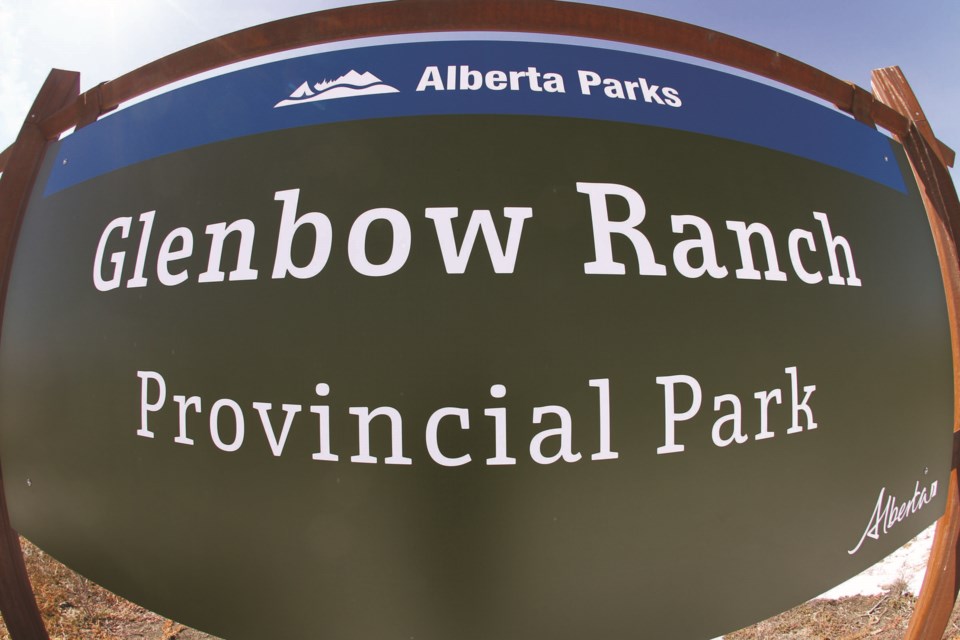The recent purchase of roughly 2,200 acres by Alberta Transportation directly across the Bow River from Glenbow Ranch Provincial Park has park officials concerned about the long-term environmental security of the sensitive ecosystems in the area.
Sarah Parker, the executive director of the Glenbow Ranch Park Foundation (GRPF), said she is concerned about the reasons Alberta Transportation has cited for the purchase.
“We suspect that a gravel pit was never the desired use for those lands and these lands were targeted for the Glenbow East reservoir option, and that makes us really uncomfortable, and it feels like it’s subverted the whole Bow River reservoir engagement process to begin with if they’ve already started purchasing lands for the reservoir project,” she said.
Parker said her foundation received word through an anonymous whistleblower that the Government of Alberta had made the purchase of the large section of land.
“Part of that land is land that would be impacted and used for the Glenbow East reservoir option, so we were concerned right off the bat,” she said. “They have said that it is for aggregate purposes, so essentially a gravel pit.”
Parker believes the area is too large to be a gravel pit, and sections of the land are not viable for such an operation as a Canadian Pacific Rail line runs through the heart of the area.
She added the purchase of this amount of land, using taxpayer money with no public consultation, points to a “lack of transparency,” on the part of the Alberta Government.
Whatever the purpose Alberta Transporation has in mind for the land development of the area, the purchase is concerning, either way, Parker said.
“Whether it’s for the Glenbow East reservoir option or for a gravel pit, our foundation is really concerned for the health of our park and the impact it has on the environment here,” she said.
Mark Jacka, communications officer with Alberta Transportation provided a statement to Great West Media that said the purchase was intended to be used for aggregate purposes, but a concrete decision on what to do with regards to land development has not yet been made.
“Alberta Transportation recently purchased approximately 2,000 acres along the Bow River, primarily for the gravel and materials that could be used for construction in the area,” the statement read. “The department occasionally buys land that may be required for upcoming projects or materials if the land becomes available, and has not made a decision about land use options.
“If the Alberta government were to pursue gravel extraction, we would need to apply to Rocky View County to rezone the land.”
In the view of GRPF, the Glenbow East reservoir project has the potential to seriously harm the Glenbow Ranch Provincial Park, as the low-lying portions of the park could be flooded by the disruption of the flow of the Bow River. According to Parker, the park contains about four per cent, or 3,200 acres, of the native grasslands in the province.
“The reservoir, like other dam structures along the river, would hold back water for flood mitigation to ease off any potential flooding downstream in the Calgary area, so what that would do, in times of high water, would flood areas of our park,” she said.
Parker said the foundation has a long-standing agreement with a nearby rancher, who turns his cattle loose in the park to graze on those grasslands.
Having cattle graze those areas and the rest of the grasslands in the park reduces the risk of wildfire by clearing out dense overgrowth and gives the grasses a chance to naturally rejuvenate, according to Parker. If a significant portion of the park is flooded by the reservoir project, she said they could lose the grazing agreement they have with the neighbouring rancher.
“Every piece of a grassland ecosystem plays a role, whether it’s forested areas, riparian areas near wetlands or the actual grasslands themselves. They all house different species who rely on each other to survive,” she said.
She said the issues with dust and noise are also a concern. Gravel pits often emit large quantities of dust, as do reservoirs. When there is no water in the reservoir, it becomes a barren mudflat, which can also be a source of dust.
“Air quality of those who live around a potential quarry or a potential reservoir will be diminished greatly.”
Parker said she and the foundation have been working with Alberta Environment and Park with regards to plans for a reservoir in the area, and they have been clear and forthcoming with their plans thus far. However, he foundation has not received any communication from Alberta Transportation or Alberta Infrastructure.
“If they go ahead with this gravel option, we would hope that they would be engaging us,” she said.



